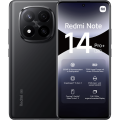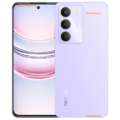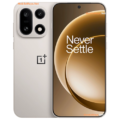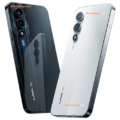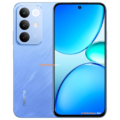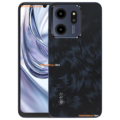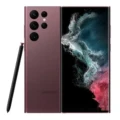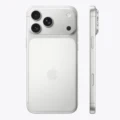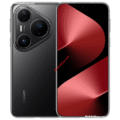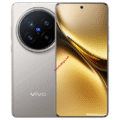Price List: Under Tk.5,000 | Tk.5001-10000 | Tk.10001-15000 | Tk.15001-20000 | Tk.20001-30000 | Tk.30001-40000 | More Mobiles
- Home
- All Mobile
- Xiaomi
- Xiaomi Redmi Note 14
Xiaomi Redmi Note 14
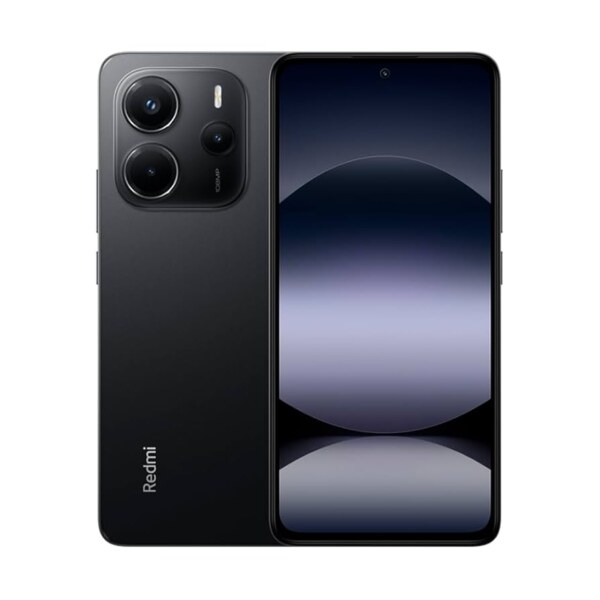


Specifications
Price in Bangladesh
| Unofficial Unofficial prices and phones are available only non authorized shops. The device does not come with an official warranty in Bangladesh. | 8GB 256GB ৳27,000 |
| Global Price |
$230 |
General
| Device Type | Smartphone |
| Model | 24117RN76G, 24117RN76O |
| Announced | January, 2025 |
| Released | January, 2025 |
| Status | Available |
Hardware & Software
| Operating System OS => Every computer system run on a base software called Operating System (OS). Operating System controls all basic operations of the computer (such as smartphone, PDAs, tablet computers and other handheld devices). The Operating System allows the user to install and run third party applications (apps), apps are used to add new functionality to the device. | Android |
| OS Version | v14 |
| User Interface UI or user interface of a device is the look and feel of the on-screen menu system. How it works, its color scheme, how it responds to button presses, all of these things are part of the user interface. | HyperOS |
| Chipset Chipset is a group of integrated circuits designed to perform one or a more dedicated functions, often with real time computing constraints, Popular smartphones are equipped with more advanced embedded chipsets that can do many different tasks depending on their programming. | Mediatek Helio G99 Ultra |
| CPU CPU (Central Processing Unit) mostly known as processors, CPU processes instructions in order to carry out certain functions that make your device operate properly. Processors are often described as the brain of computers, smartphones and tablets, Smartphones and tablets rely on processors to carry out their every task, Processors are an incredibly important factor in selecting any type of computing device, including your smartphone. | Octa-core (2x2.2 GHz Cortex-A76 & 6x2.0 GHz Cortex-A55)55) |
| CPU Cores | 8 Cores |
| Architecture | 64 bit |
| Fabrication | 6 nm |
| GPU GPU (Graphics Processing Unit) is a single-chip processor designed to rapidly manipulate and alter memory to accelerate the creation of images in a frame buffer intended for output to a display, This includes things such as lighting effects, object transformations, and 3D motion. | Mali-G57 MC2 |
| RAM (Memory) RAM (Random Access Memory) is a type of computer memory that can be accessed randomly, any byte of memory can be accessed without touching the preceding bytes that allows information to be stored and accessed quickly from random locations. RAM is the most common type of memory found in computer systems, smartphones, tablets and other electronic devices. | 6 GB, 8 GB, 12 GB |
Design
| Dimensions | 163.3 x 76.6 x 8.2 mm (6.43 x 3.02 x 0.32 in) |
| Weight | 196.5 g (6.95 oz) |
| Colors |
Midnight Black, Mist Purple, Ocean Blue, Lime Green |
| Build Material | Glass front (Gorilla Glass 5), plastic back, aluminum frame |
| Water Resistant | Water resistant |
| IP Rating | IP54 |
| Ruggedness | Dust proof |
Display
| Display Type Display Technology => A number of display technologies and types used in mobile phones => TFT (Thin Film Transistor), IPS (In-Place Switching), OLED (Organic Light Emitting Diode), AMOLED (Active-Matrix Organic Light-Emitting Diode), Super AMOLED (an even advanced version of AMOLED), Resistive Touchscreen (Resistive touchscreens contain two layer of conductive material with a very small gap between them which acts as a resistance), Capacitive Touchsceen (Capacitive touchscreen technology consists of a layer of glass coated with a transparent conductor) | AMOLED |
| Size | 6.67 inches (16.94 cm) |
| Resolution | 1080x2400 px (FHD+) |
| Aspect Ratio | 20:9 |
| Pixel Density Pixel Density (PPI) is refers to the concentration of pixels on a particular display, measured in pixels per inch (ppi). Pixel density is calculated by dividing the diagonal pixel resolution of a display by its diagonal size, higher pixel density better display quality. | 395 ppi |
| Screen to Body Ratio | 87.4% |
| Touch Screen | Capacitive Touchscreen, Multi-touch |
| Brightness | 1800 nits |
| Refresh Rate | 120 Hz |
| HDR 10 / HDR+ support |
Rear Camera
| Camera Setup | Triple |
| Main Camera | 108 MP |
| Second Camera | 2MP |
| Third Camera | 2 MP |
| Autofocus | Yes |
| OIS | |
| Flash Flash Light => There is commonly two types of flash lights are used in camera mobile phones, LED Flash (LED flash offers lower power consumption with drive circuitry that takes up very little room, LEDs can be strobed faster than any other light source), Xenon Flash (xenon flash produces an extremely intense full-spectrum white light for a very short duration) | LED Flash |
| Image | 12000 x 9000 Pixels |
| Settings | Exposure compensation, ISO control |
| Zoom | Digital Zoom |
| Shooting Modes | Continuous Shooting, High Dynamic Range mode (HDR) |
| Aperture | f/1.7 |
| Camera Features |
Auto Flash, Face detection, Touch to focus |
| Video | 1080p@30fps |
| Video Recording Features | 1920x1080, 1280x720 |
| Video FPS | 60 fps, 30 fps |
Front Camera
| Camera Setup | Single |
| Secondary |
20 MP, f/2.2, (wide), 1/4.0", 0.7µm |
| Aperture | f/2.2 |
| Video | 1080p@30fps |
| Video FPS | 30 fps |
Battery
| Battery Type Battery Type => Cell phones run on various kinds of batteries depending on the manufacturer, phone size or shape and features. There are basically four types of cell phone batteries => Lithium Polymer, Lithium Ion, Nickel Metal Hydride and Nickel Cadmium. | Li-Ion (Lithium Ion) |
| Placement | Non-removable |
| Capacity Battery Capacity is a measure (typically in Amp-hr) of the charge stored by the battery, and is determined by the mass of active material contained in the battery. The battery capacity represents the maximum amount of energy that can be extracted from the battery under certain conditions. | 5500 mAh |
| Quick Charging | 33W wired |
| USB Type-C | USB Type-C 2.0 |
Storage
| Storage Type | UFS 2.2 |
| Storage Capacity | 128 GB, 256 GB, 512 GB |
| USB OTG |
Network
| 2G Network |
GSM 850 / 900 / 1800 / 1900 |
| 3G Network |
HSDPA 850 / 900 / 2100 |
| 4G Network |
1, 3, 5, 7, 8, 20, 28, 38, 40, 41 |
| SIM SIM (Subscriber Identity Module) is a small card that contains mobile network subscriber's account information. This allows the phone using the card to attach to a mobile network. The SIM card is most commonly associated with GSM and UMTS mobile networks. Moving a SIM card from one phone to another allows a subscriber to switch mobile phones without having to contact their mobile network carrier. SIM cards can also be used by a phone to store limited amounts of data, such as phone numbers and text messages. | Standard SIM |
Data
| GPRS GPRS (General Packet Radio Service) is a packet oriented mobile data service on the 2G and 3G cellular communication system's global system for mobile communications (GSM), Generally, GPRS is used for the purpose of wireless data transfer, such as sharing pictures and videos or browsing the Internet via a mobile phone connection. | |
| EDGE EDGE (Enhanced Data GSM Environment) is a wireless network technology generally considered the next step in the 2G network offers data transfer rates up to four times faster than ordinary GSM networks, Generally, EDGE is used for the purpose of wireless data transfer, such as sharing pictures and videos or browsing the Internet via a mobile phone connection. | |
| Speed | HSPA, LTE |
| Web Browser Web Browser => a web browser is a software application used to locate, retrieve and display content on the World Wide Web, including Web pages, images, video and other files, The primary function of a web browser is to render HTML, the code used to design or markup webpages. | HTML5 |
Messaging
| SMS SMS (Short Messaging Service) is a text messaging service component of phone, Web, or mobile communication systems. It uses standardized communications protocols to allow mobile phone devices to exchange short text messages over the networks. | Yes |
| MMS MMS (Multimedia Messaging Service) is a standard way to send messages that include multimedia content (audio clips, video clips and images) to and from mobile phones over wireless networks using the WAP protocol. | |
| Email Email (Electronic Mail) is a system for receiving, sending, and storing electronic messages, Similar to a letter, email is text messages that may contain files, images, or other attachments sent via the internet to a recipient by using applications and software prograps. An email address is required to receive email, and that address is unique to the user. | Yes |
| IM IM (Instant Messaging) is an exchange of text messages through a software application, it enable you to create a kind of private chat room with another individual in order to communicate in real time over the Internet. | Yes |
Connectivity
| Bluetooth Bluetooth is a wireless communications technology for exchanging data between mobile phones, headsets, computers and other network devices over short distances without wires, Bluetooth technology was primarily designed to support simple wireless networking of personal consumer devices. | v5.3 |
| Wi-fi Hotspot | |
| Infrared Infrared connectivity is an old wireless technology used to connect two electronic devices. It uses a beam of infrared light to transmit information and so requires direct line of sight and operates only at close range. | |
| USB | Mass storage device, USB charging |
| GPS GPS The Global Positioning System is a satellite-based radio navigation system, GPS permits users to determine their position, velocity and the time 24 hours a day, in all weather, anywhere in the world, In order to locate your position, your device or GPS receiver must have a clear view of the sky. | Yes with A-GPS, Glonass |
| NFC NFC (Near field communication) is a set of standards for smartphones and similar devices to establish peer-to-peer radio communications with each other by touching them together or bringing them into proximity, usually no more than a few inches. |
Media
| FM Radio | Unspecified |
| Loudspeaker | Yes |
| 3.5mm Jack | Yes |
| Audio Jack | USB Type-C |
Sensors & Security
| Fingerprint Sensor | |
| Fingerprint Sensor Position | On-screen |
| Light Sensor | Light sensor, Proximity sensor, Accelerometer, Compass, Gyroscope |
| Face Unlock | Yes |
More
| Made By | China |
| SAR EU | 1.00 W/kg (head) 0.97 W/kg (body) |
Performance Tests
| Loudspeaker | -24.8 LUFS (Very good) |
| Battery (new) | Active use score 12:47h |
PROS
- Excellent 108MP main camera
- Smooth AMOLED 120Hz display
- High brightness (1800 nits) for outdoor use
- Long-lasting 5500mAh battery
- Latest Android 14 and HyperOS
- On-screen fingerprint + face unlock
- Dual SIM + headphone jack + IR blaster
CONS
- No 5G support
- No official availability in Bangladesh
- No OIS (Optical Image Stabilization)
- No microSD slot (as per current info)
- Plastic back may feel less premium
Xiaomi Redmi Note 14 Price in Bangladesh
The Xiaomi Redmi Note 14 is priced at ৳27,000 for the 8GB RAM + 256GB storage variant (Unofficial). This latest entry in Xiaomi’s popular Note series blends modern design, solid performance, and impressive camera specs at a mid-range price. It’s an ideal choice for users looking for a smartphone that excels in display quality, photography, and daily multitasking, without crossing into flagship pricing.
The Redmi Note 14 features a stunning 6.67″ AMOLED display with a 120Hz refresh rate, a 108MP triple rear camera, the MediaTek Helio G99 Ultra chipset, and a robust 5500mAh battery. Powered by Android 14 and Xiaomi’s HyperOS, it offers a polished user experience with extended battery life and great media performance. It’s best categorized as a mid-range smartphone, standing out with its high-resolution camera, durable design, and ample storage options.
Price & Variants
| RAM & Storage | Price (BDT) | Status |
|---|---|---|
| 8GB + 256GB | ৳27,000 | Unofficial |
Xiaomi Redmi Note 14 Specifications
The Xiaomi Redmi Note 14 is a feature-rich mid-range smartphone that combines strong performance, photography capabilities, and a vibrant display. It’s designed to meet the needs of power users, casual gamers, and content lovers alike.
| Feature | Details |
|---|---|
| Model Name | Xiaomi Redmi Note 14 |
| Release Date | January 16, 2025 |
| Market Availability | Available (Unofficial in Bangladesh) |
| Official Price | ৳27,000 (8GB + 256GB, Unofficial) |
| RAM & Storage | 6GB/8GB/12GB + 128GB/256GB/512GB |
Display and Design
The Xiaomi Redmi Note 14 sports a 6.67-inch AMOLED display with a crisp FHD+ resolution of 1080×2400 pixels, an aspect ratio of 20:9, and a 395 ppi pixel density. The display supports 120Hz refresh rate and reaches up to 1800 nits of peak brightness, making it vibrant and fluid even under direct sunlight.
Design-wise, the phone feels premium thanks to a Gorilla Glass 5 front, a plastic back, and an aluminum frame. It measures 163.3 x 76.6 x 8.2 mm and weighs 196.5g, offering a solid but comfortable in-hand experience. Color options include Midnight Black, Mist Purple, Ocean Blue, and Lime Green. It’s also IP54 rated, offering basic water and dust resistance.
Performance and Processor
Under the hood, the Redmi Note 14 runs on the MediaTek Helio G99 Ultra chipset, featuring an octa-core CPU (2×2.2 GHz Cortex-A76 & 6×2.0 GHz Cortex-A55) built on a 6nm process, paired with the Mali-G57 MC2 GPU. It ensures smooth multitasking, efficient performance, and lag-free gaming for mid-tier users.
The phone is available in 6GB, 8GB, and 12GB RAM options, combined with 128GB, 256GB, and 512GB UFS 2.2 storage, ensuring fast app loading and data transfer. While there’s no mention of expandable storage, the higher-tier storage options will suffice for most users.
Camera and Video
The camera setup is one of the highlights of the Redmi Note 14. It boasts a 108MP primary sensor with an f/1.7 aperture, delivering detailed and sharp images in good lighting. It’s paired with a 2MP macro and a 2MP depth sensor, creating a capable triple-camera system for general photography.
Camera features include HDR, Face Detection, Touch to Focus, Auto Flash, and more. It supports video recording at 1080p@30fps and 720p@60fps, making it suitable for social media content creators.
On the front, there’s a 20MP selfie camera with an f/2.2 aperture, capable of capturing decent selfies and supporting 1080p@30fps video.
Battery and Charging
The Redmi Note 14 houses a 5500mAh non-removable Li-Ion battery, offering excellent screen-on time and endurance for heavy users. It supports 33W wired fast charging via a USB Type-C 2.0 port, ensuring the device charges quickly and efficiently. With Xiaomi’s battery optimization under HyperOS, users can expect reliable all-day performance.
Connectivity and 5G Support
Although the Redmi Note 14 supports extensive 2G, 3G, and 4G bands, there is no 5G support on this model, which might be a dealbreaker for some future-focused buyers. However, it offers reliable dual SIM support, Bluetooth 5.3, Wi-Fi, USB OTG, and GPS with A-GPS and Glonass.
Additional features include an IR blaster and a 3.5mm headphone jack, both becoming rare in modern smartphones.
Additional Features
- Fingerprint Sensor: On-screen (optical)
- Face Unlock: Yes
- Operating System: Android 14 with HyperOS
- Sensors: Accelerometer, Proximity, Light sensor, Compass, Gyroscope
- Audio: Loudspeaker and 3.5mm headphone jack
- Build Quality: Rated IP54 for water and dust resistance
- Performance Test Score: 7.2/10 (Battery Life: 6/10, Camera: 8/10)
Reason to Buy
- Affordable mid-range pricing with flagship-level 108MP camera
- Smooth 120Hz AMOLED display with 1800 nits brightness
- Large 5500mAh battery with 33W fast charging
- Sleek design with Gorilla Glass 5 protection
- Android 14 with Xiaomi’s HyperOS for smooth UX
- On-screen fingerprint and Face Unlock
- 3.5mm headphone jack and IR blaster
Verdict
The Xiaomi Redmi Note 14 is a balanced mid-range smartphone that offers excellent value for money. With its impressive 108MP camera, vibrant AMOLED screen, reliable battery life, and solid build, it suits users who prioritize display quality, photography, and day-to-day performance.
It’s especially ideal for students, young professionals, and casual gamers who want a stylish, capable device without spending a fortune.
FAQ
1. Is Xiaomi Redmi Note 14 officially available in Bangladesh?
No, the phone is currently unofficially available in Bangladesh.
2. Does it support 5G?
No, the Redmi Note 14 does not support 5G networks.
3. What is the battery capacity?
It comes with a 5500mAh battery and supports 33W fast charging.
4. Can I expand the storage via microSD?
No official information confirms expandable storage.
5. Which Android version does it run?
It runs on Android 14 with Xiaomi’s HyperOS UI.
6. Is it suitable for gaming?
Yes, it offers decent gaming performance for mid-level users, thanks to the Helio G99 Ultra chipset and Mali-G57 GPU.
Alternatives to Xiaomi Redmi Note 14
- Samsung Galaxy A15 4G – AMOLED display, One UI, similar price range
- Infinix Zero 30 4G – 108MP camera, Helio G99, AMOLED display
- Realme Narzo 60x – Budget 5G phone with decent performance
- POCO X5 4G – AMOLED 120Hz display, Snapdragon 695
- Redmi Note 13 4G – Slightly newer UI and chipset options
User Reviews
Disclaimer Note
We do not guarantee that the information of this page is 100% accurate and up to date.


